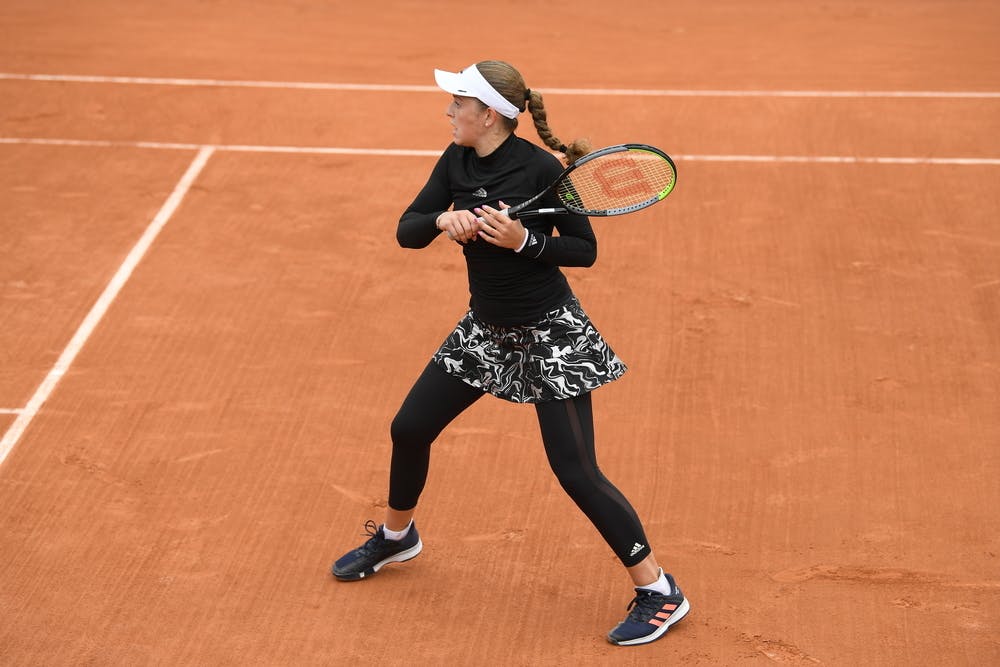“After I won it was a tough time,” Ostapenko said, after dropping just three games against American Madison Brengle in her opening round on Tuesday. “I had to get used to the pressure but now it's all gone.
“Finally I won my first match after two years of not winning a match here (in Paris). I'm really happy with that. Because first rounds are always tough, and it's never easy, and you get tight sometimes and you have to deal with the pressure. But I felt really well today on court. Hopefully I can keep it up.”
New partnership
To get back to the top, the 23-year-old has hired a new coach, Thomas Hogstedt and added a new dimension to her game: consistency.
During her post-match press conference, Ostapenko used the word “consistency” eight times. It’s the part of her game she has been working hard on to improve and which she believes can make her a top-five player and major winner once more.
“It’s just a matter of time,” she told rolandgarros.com. “I just need more consistency in my game, and just play aggressive, as I am playing right now. Then I think I am going to be a very dangerous player.”
Shortly before the start of Roland-Garros, Ostapenko started working with Hogstedt, the Swede who coached Maria Sharapova of Russia to the 2012 title.
“We just started to work together, so not much we can do during a tournament,” she said. “But of course, he helped me and said some good things that I could use in the matches. He’s a very experienced coach and he can help me a lot.”
Although lockdown was tough in Latvia, it did allow Ostapenko to spend more time than usual on the clay.
“For a couple of months, we were stuck at home and the gyms were closed, the tennis courts were closed, everything was closed,” she said. “So I could just go for a run or just do something at home, which was the only option at that time. And then of course, when everything opened, I started to practice, but mostly, I was practising on clay because I didn’t want to go to the US and play the US swing. So I was hoping that these tournaments on clay would happen.”
 ROLAND-GARROS
19 May - 8 June 2025
ROLAND-GARROS
19 May - 8 June 2025



 © Julien Crosnier/FFT
© Julien Crosnier/FFT